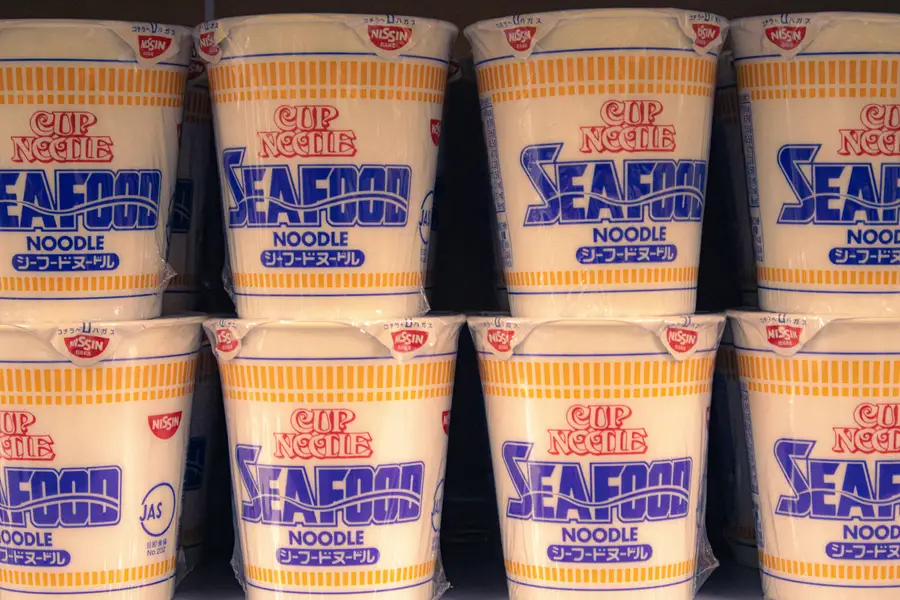Nissin seeks the right flavor mix to keep noodle sales rising

The Japanese instant noodle giant has reported solid earnings, but the pace has slowed in mainland China, where novelty and value for money are key factors
Key Takeaways:
- Nissin revenues for the first three quarters rose 6.99% and net profit increased 2.73% from the year-earlier period
- In mainland China, revenue rose 5.4% but the growth rate was slower than in the first half
By Lee Shih Ta
The familiar taste of instant noodles is a comfort food for many consumers and a staple of the food business.
When times are tough, noodles can still enjoy a resilient appeal. And so Japanese noodle giant Nissin Foods Company Ltd. (1475.HK) reported a modest rise in nine-month earnings on Nov. 10, still popular after 40 years in the Chinese market but now facing challenges to connect with younger buyers.
Nissin’s revenues for the three quarters rose 6.99% to HK$3.06 billion ($394 million) from the year-earlier period, while net profit edged up 2.73% to HK$258 million. Gross profit margin rose to 35.4% from 34.8%, mainly driven by higher sales of cup noodles and better production efficiency.
Revenue from Hong Kong and other overseas markets rose 9.5% to HK$1.20 billion. Growth in mainland China was less strong, as turnover increased 5.4% to HK$1.86 billion, accounting for about 60% of total revenue. The rate was slower than the 9.4% growth pace in the first half, suggesting sales momentum in China slackened in the third quarter.
Strengthening offline channels
The company told an investor briefing that sales in southern China had returned to growth while business in the north and west also improved. This indicates a move away from relying on e-commerce channels towards a renewed focus on offline distribution and convenience stores, with an expanded presence in southern and western China to stabilize margins and reinforce brand visibility.
To attract new customers, Nissin has launched options for health-conscious consumers such as non-fried, high-fiber and low-calorie noodles, while also partnering with popular anime and gaming brands to appeal to a younger demographic. These strategies have helped to energize its image, although some non-core businesses such as frozen foods and snacks continue to make a loss.
China’s demand for instant noodles is indeed recovering, according to statistics from the World Instant Noodles Association. Annual instant noodle consumption in China fell from 46.36 billion servings in 2020 to 42.2 billion in 2023, before rising to 43.8 billion in 2024. Despite competition from other ready-to-eat options and fast meal deliveries, instant noodles appear to be standing their ground.
Even so, Nissin’s recovery in the Chinese market remains fragile.
Brand image – solid or staid?
Nissin has long benefited from a reputation for reliable quality, but that strength carries a downside. As younger consumers in China increasingly seek novelty and interactivity, established products such as Demae Iccho and Cup Noodles, while nostalgic, risk appearing conservative. This tension has become Nissin’s biggest challenge across its two major markets.
Hong Kong has its own dynamics. Demae Iccho is a household classic in Hong Kong, stocked in nearly every pantry and marketed as offering trusted quality and familiarity. Nissin has long dominated Hong Kong’s premium market for instant noodles, building a solid distribution network through convenience stores, cafes and supermarkets.
By contrast, instant noodles are often regarded as a quick fix for fast-paced lifestyles in mainland China, where price remains a key consideration. Domestic rivals such as Tingyi (0322.HK), Uni-President China (0220.HK), Jinmailang and Baixiang offer a wide range of budget to premium products, combining affordability with novel taste sensations.
Nissin has launched several sub-brands to target different segments, but their visibility remains limited. For most consumers, the company is still synonymous with the familiar Cup Noodles and Demae Iccho packaging.
The four major Chinese brands together command more than 80% of China’s instant noodle market, according to industry statistics. Meanwhile, Korean players Samyang Foods (145990.KS) and Nongshim (004370.KS) are also looking to expand, intensifying competition.
Even so, Nissin has not scaled back its investment in China. The company bought land in Zhuhai, Guangdong Province, in September for about 240 million yuan ($34 million) to build a highly automated factory to boost capacity and efficiency. Chairman Kiyotaka Ando said the move responds to rising demand for premium products and shifting regional market trends, with China remaining a core focus of Nissin’s medium- to long-term growth strategy.
So far this year, Nissin’s share price has risen about 17.18%, rebounding from last year’s low but still lagging the pace of the benchmark Hang Seng Index over the same period. The company trades at a price-to-earnings ratio of 37.9 times, well above Tingyi’s 15 times and Uni-President China’s 15.7 times. The premium reflects Nissin’s brand stability and improving margins, but it begs the question of whether the earnings performance fully justifies the relatively high price.
Ultimately, Nissin remains an endearing brand denoting consistent quality and Japanese expertise. For Nissin to truly stand out with investors, it may have to strike the right balance between change and continuity.
To subscribe to Bamboo Works free weekly newsletter, click here






